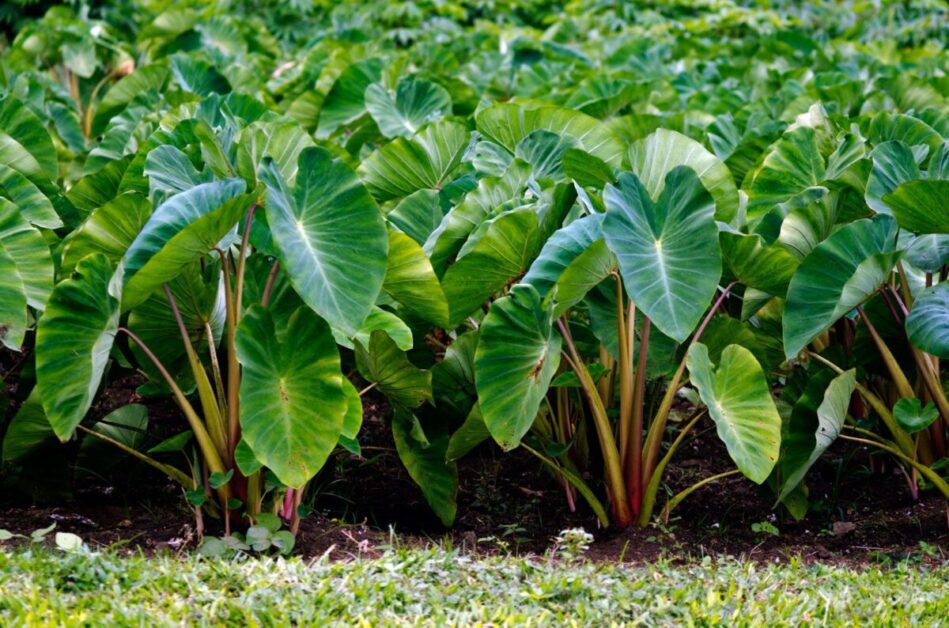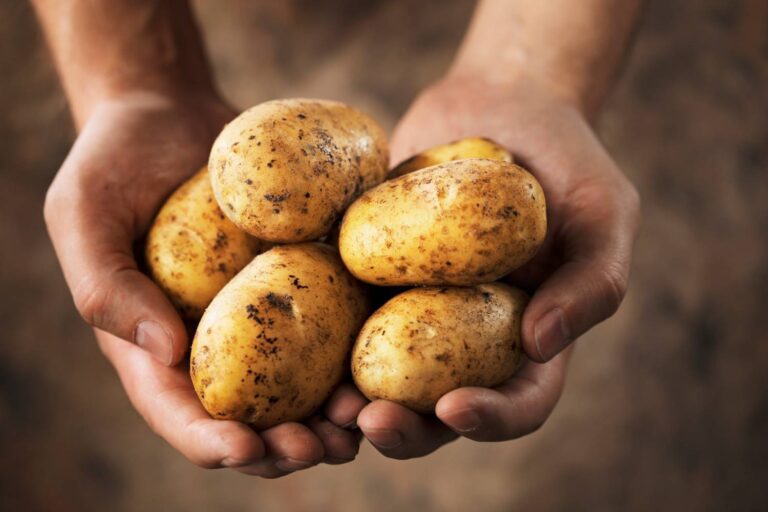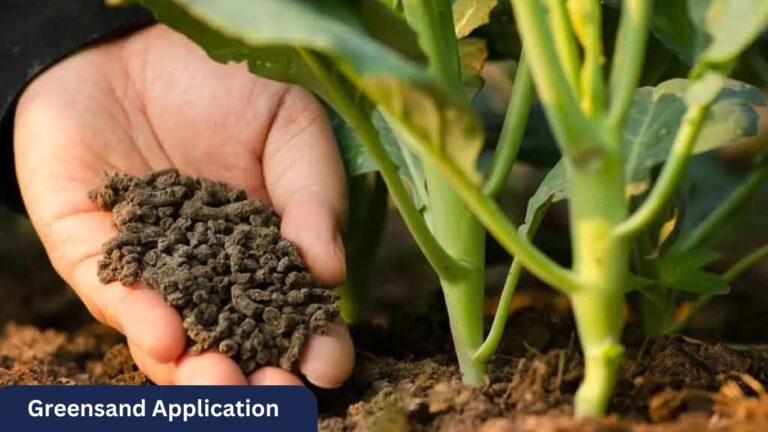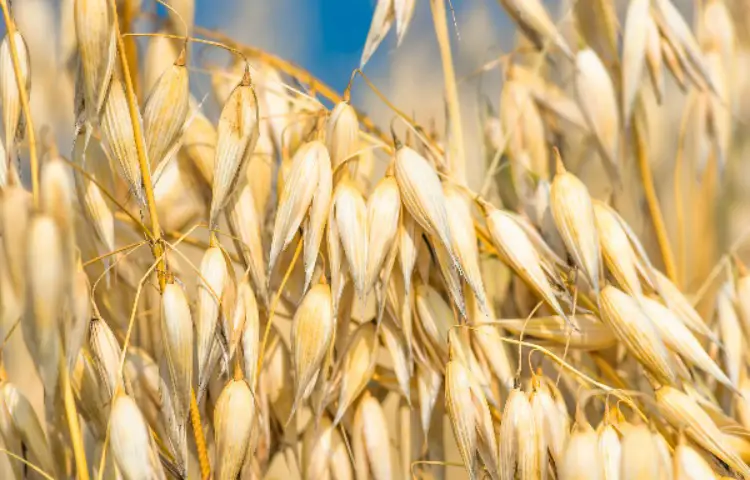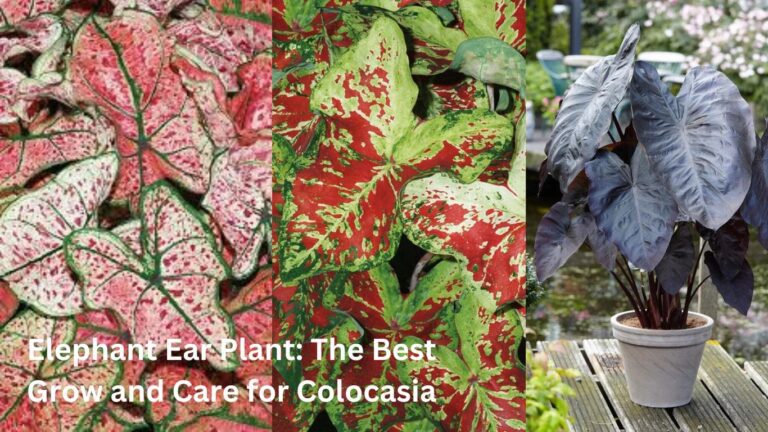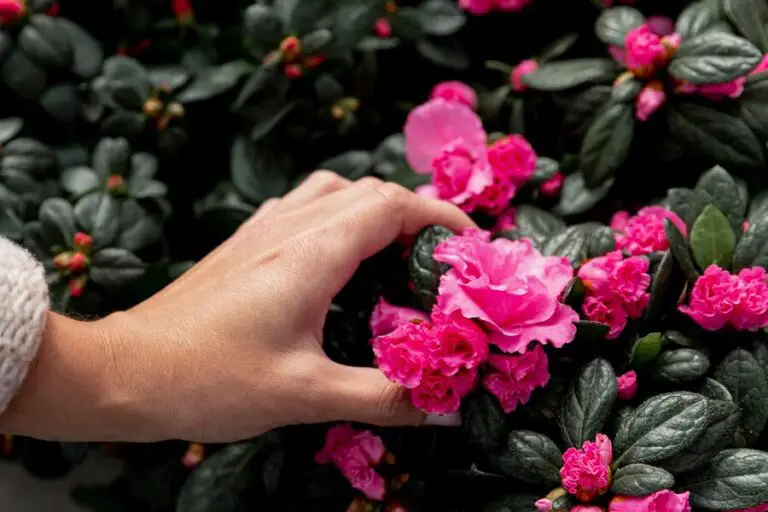Taro Plant: Grow Your Own Backyard Poi
Are you ready to bring a taste of Hawaii to your backyard with the versatile and nutritious taro plant? Did you know that taro is not only a staple in Hawaiian cuisine but also a source of delicious poi, a traditional dish loved for its unique flavor and health benefits? Growing your own taro plant can be a rewarding experience, allowing you to enjoy fresh and authentic poi right at home.
Join us as we delve into the world of taro cultivation, sharing expert tips and insights on how to grow this tropical gem in your own garden. Get ready to embark on a culinary adventure and savor the flavors of Hawaii with your very own backyard poi!
Table of Contents
The Historical Significance of Taro Plant in Hawaiian Culture
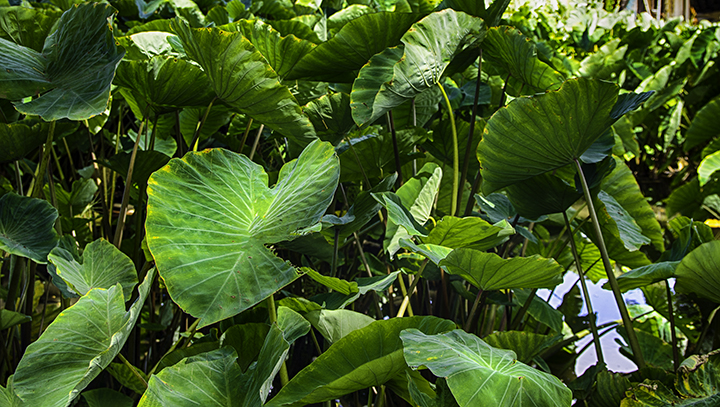
Having read “Taro Plants: Plant Guide” by Andrey Lalko, I found it to be an incredibly helpful resource for anyone interested in indoor gardening. The book provides comprehensive guidance on not only growing house plants but also on creating a thriving indoor garden environment. One aspect I particularly appreciated was the section on composting methods, which offered practical tips and step-by-step instructions on how to efficiently compost organic matter for healthier plant growth. Overall, I highly recommend this book to both novice and experienced plant enthusiasts looking to enhance their indoor gardening skills.
- Comprehensive Guide: Despite its compact size, the book provides comprehensive information on growing taro plants, covering various aspects from selecting the right plants to providing optimal growing conditions.
- Practical Tips: The author includes practical tips and expert advice suitable for both beginners and experienced gardeners, making it easy to understand and implement the instructions.
- Easy to Follow: The step-by-step instructions are clear and easy to follow, allowing readers to navigate the process of growing taro plants with confidence.
- Affordable: With a reasonable price point, the book offers value for money, making it accessible to a wide audience interested in taro cultivation.
- Health Benefits: The book highlights the health benefits of house plants, emphasizing how growing taro plants can contribute to improved well-being and air quality within the home environment.
- Limited Content: Some readers may find the book’s content to be relatively basic, lacking in-depth information or advanced techniques for taro cultivation.
- Short Length: With only 52 pages, the book may leave readers wanting more detailed explanations or additional topics related to taro plant care.
- Potential Shipping Costs: Depending on the location, buyers may incur additional shipping fees, which could affect the overall affordability of the book.
Understanding the Nutritional Value of Taro and Poi
- Taro:
- Starchy Root Vegetable: Staple in Hawaiian cuisine.
- Dietary Fiber: Provides approximately 5 grams of fiber per 1 cup serving. Supports healthy digestion and blood sugar regulation.
- Potassium: Contains around 550 milligrams per serving. Essential for electrolyte balance, muscle function, and heart health.
- Vitamins and Minerals:
- Vitamin C: An antioxidant that boosts immune health and collagen production.
- Magnesium: Crucial for muscle and nerve function.
- Iron: Necessary for red blood cell production and preventing anemia.
- Poi:
- Traditional Hawaiian Dish: Made from taro root.
- Nutritional Content (per 100g):
- Carbohydrates: 22.3g
- Protein: 0.6g
- Fat: 0.1g
- Fiber: 1.9g
- Vitamin C: 18.6mg
- Vitamin B6: 0.224mg
- Potassium: 458mg
- Iron: 0.2mg
- Calcium: 24mg
- Incorporating Taro and Poi:
- Enjoy as a side dish, use in soups, or incorporate into desserts.
- Provides a nutritious boost and unique flavors.
- Remember that individual nutritional needs may vary, so consult a healthcare professional for personalized advice.
Taro and poi celebrate both taste and health—truly a valuable addition to any diet! 🌱🍽️
Climate and Soil Requirements for Growing Taro Plants
Taro plants have specific climate and soil requirements that need to be met for successful cultivation. The tropical climate of Hawaii provides the ideal conditions for growing taro, as it thrives in warm temperatures and high humidity.
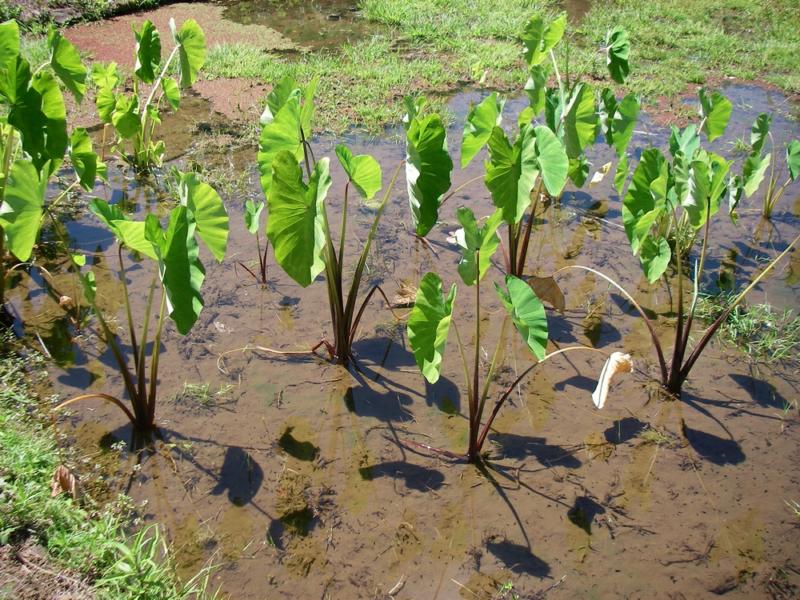
Tropical or Subtropical: Taro thrives in warm climates.
Temperature Range: Ideal temperatures are around 75°F to 95°F (24°C to 35°C).
Frost-Free Days: Taro needs about 200 warm, frost-free days.
Adaptation: In cooler climates, grow it as an annual or focus on edible leaves.
Preferred Soil: Taro prefers loamy or sandy loam soils.
Well-Drained: Soil should be well-drained to prevent waterlogging.
pH Level: Aim for a slightly acidic to neutral pH range of 5.5 to 7.0.
Organic Matter: Amend soil with compost or organic matter to improve structure and fertility.
Taro plants are sensitive to waterlogged conditions.
Poor root development and disease risk occur in compacted soils.
By meeting these requirements, gardeners can create an optimal environment for taro plants to thrive and yield a successful harvest. 🌱🌿
Choosing the Right Taro Varieties for Your Backyard
Taro is a versatile plant that offers a wide range of varieties to choose from when considering cultivation in your backyard. The selection of the right taro variety is crucial to ensure a successful harvest and to cater to your specific needs. With various colors, sizes, and flavors available, it’s important to understand these differences in order to make an informed decision.
These taro varieties offer a delightful range of flavors and culinary possibilities:
| Variety | Advantages | Disadvantages | Characteristics |
|---|---|---|---|
| Chinese Taro | – Widely available: Most common variety. – Starchy, nutty flavor: Ideal for dishes like poi and luau stew. | – Limited flavor diversity: Not as sweet as other varieties. – Texture: Can become fibrous if overcooked. | – Starchy, nutty flavor – Boiled, steamed, mashed, fried, or used in desserts. |
| Hawaiian Taro | – Sweet, nutty flavor: Popular in Hawaii. – Versatile: Used in poi, soups, stews, and laulau. | – May be less readily available outside Hawaii: Regional availability. – Texture: Can be slimy if overcooked. | – Sweet, nutty flavor – Key ingredient in laulau (steamed pork wrapped in taro leaves). – Boiled and mashed into poi. |
| Indian Taro | – Mild, sweet flavor: Great for rice dishes. – Versatile cooking methods: Boiled, mashed, steamed, fried. | – Flour form: Often found as flour for flatbreads and pastries. – Texture: Can be grainy when cooked. | – Mild, sweet flavor – Used in rice dishes and various sauces. – Flour form for baking. |
| West Indian Taro | – Bitter flavor: Unique taste for stews and soups. – Callaloo: Used to make sweet and savory porridge. | – Bitterness: May not appeal to everyone. – Texture: Can be slimy if overcooked. | – Slightly bitter flavor – Boiled, steamed, fried, or used in callaloo. |
| Bun Long Taro | – Elongated shape: Aesthetic appeal. – Mild, nutty flavor: Versatile for both savory and sweet dishes. | – Not as sweet as some varieties: Taste preference varies. – Texture: Requires proper cooking to avoid fibrousness. | – Elongated shape – Culinary enthusiasts’ favorite. – Used in various dishes. |
| Lehua Maoli Taro | – Vibrant pink flesh: Visually striking. – Slightly sweet taste: Unique flavor profile. | – Availability outside specific regions: May be limited. – Texture: Requires careful cooking to maintain color. | – Striking pink flesh – Ideal for culinary presentations. – Sweet and savory applications. |
| Ula’Ula Taro | – Earthy flavor: Distinct taste. – Creamy texture: Pleasing mouthfeel. | – Availability: May not be widely accessible. – Texture: Requires proper cooking to achieve creaminess. | – Earthy flavor – Traditional Hawaiian staple. – Creamy consistency. |
These taro varieties offer a delightful range of flavors and culinary possibilities! 🌱🍽️
To make the best selection for your backyard, consider factors such as the desired flavor profile, culinary uses, and growing conditions. A reliable resource for taro varieties is your local agricultural extension office or a reputable nursery specializing in tropical plants.
They can provide tailored guidance based on your specific location and climate, helping you choose the right taro varieties that will thrive in your backyard. By carefully selecting the appropriate taro variety, you can embark on a rewarding journey of cultivating this cherished crop right at home.
The Importance of Proper Taro Planting Techniques
Proper planting techniques play a critical role in ensuring the successful growth and development of taro plants. Whether you are a seasoned gardener or a novice enthusiast, understanding and implementing these techniques is essential for achieving optimal results.
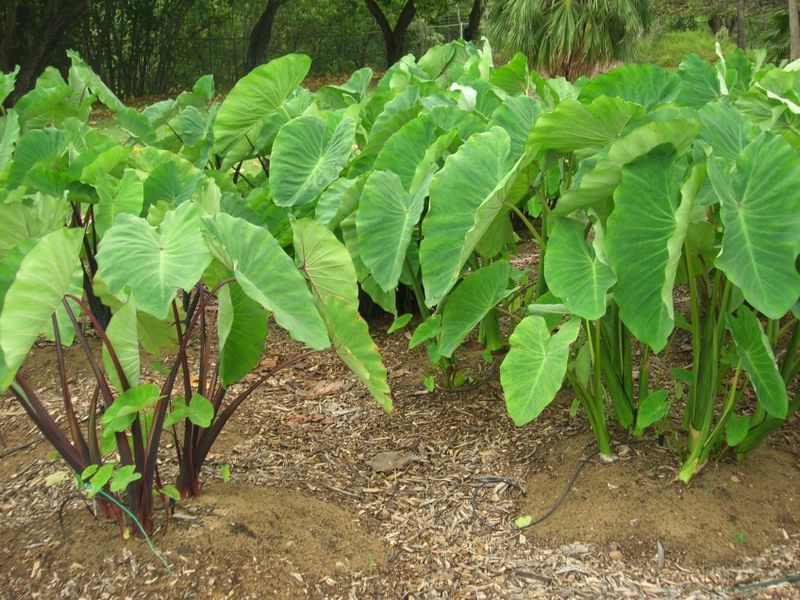
Soil: Taro thrives in moist and well-drained soil. Aim for a pH level between 5.5 and 7.5.
Sunlight: Choose a site that receives six to eight hours of direct sunlight per day. Adequate sunlight is crucial for healthy growth.
Spacing: Provide sufficient space between plants to allow for proper airflow. This helps prevent the spread of diseases.
Tubers: Plant taro tubers (also known as corms) in a container filled with potting soil. Ensure they are covered with about two inches of soil.
Direct Ground Planting: In warm climates, plant directly into the ground. Taro grows best with at least three hours of full sun each day during the growing season.
Propagation: You can also propagate taro from cuttings taken from existing plants.
By carefully considering these factors, you can create an ideal environment for your taro plants to flourish.
Nurturing Taro Plants: Watering, Fertilizing, and Pest Management
Proper care and management are essential for nurturing healthy taro plants. Let’s see the key points for watering, fertilizing, and pest control:
- Watering:
- Moist Soil: Taro thrives in moist soil conditions. Regular watering is crucial.
- Balance: Avoid overwatering, which can lead to root rot. Water when the top inch of soil feels dry.
- Deep Watering: Encourage strong root development by watering deeply but not excessively.
- Fertilizing:
- Nutrient-Rich Soil: Taro needs a nutrient-rich environment. Before planting, incorporate organic matter (compost or well-rotted manure) into the soil.
- Balanced Fertilizer: Use a balanced fertilizer with nitrogen, phosphorus, and potassium. Follow recommended dosages to avoid imbalances or burn.
- Pest Management:
- Regular Inspection: Check leaves, stems, and tubers for signs of pests.
- Common Pests: Watch out for aphids, caterpillars, and nematodes.
- Organic Control:
- Beneficial Insects: Introduce ladybugs or lacewings to control pests.
- Neem Oil or Insecticidal Soaps: Safeguard your plants without harsh chemicals.
- Integrated Pest Management: Combine cultural practices, biological controls, and targeted pesticides when necessary.
Remember, a well-maintained taro plant will reward you with a bountiful harvest! 🌱🌿 .
After delving into “The Composting Bible: [5 in 1],” I can confidently attest to its efficacy in simplifying the composting process and empowering individuals to make a meaningful impact on their environment. Jeff Binder’s approachable language and comprehensive instructions demystify composting, making it accessible to beginners and seasoned gardeners alike.
By following the techniques outlined in the book, I successfully converted my kitchen and yard waste into nutrient-rich soil for my garden, witnessing firsthand the transformative power of composting. From understanding the fundamentals to implementing practical tips, every aspect of the composting journey is covered with clarity and precision. “The Composting Bible” is undoubtedly a valuable resource for anyone looking to embark on a sustainable gardening adventure.
- Environmental Impact: Composting reduces the amount of organic waste sent to landfills, thereby decreasing methane emissions and aiding in the reduction of greenhouse gas emissions, which contribute to climate change.
- Nutrient-Rich Soil: The composting process transforms organic waste into nutrient-rich soil amendment, enhancing soil fertility and promoting healthier plant growth. This can result in improved yields for gardeners and farmers.
- Cost Savings: By composting organic waste at home, individuals can reduce their reliance on store-bought fertilizers and soil conditioners, saving money in the long run. Additionally, municipal composting programs may reduce waste management costs for communities.
- Sustainability: Composting aligns with principles of sustainability by closing the loop on organic waste management. Instead of discarding valuable nutrients, composting reintroduces them into the soil, supporting a circular economy.
- Educational Value: Resources like “The Composting Bible” provide valuable information and guidance on composting techniques, materials, and best practices, empowering individuals to take proactive steps towards environmental stewardship.
- Space Requirements: Effective composting may require space for compost bins or piles, which could be challenging for individuals with limited outdoor space, particularly in urban areas or apartments.
- Time and Attention: Successful composting requires regular maintenance, including turning the compost pile, monitoring moisture levels, and balancing carbon-to-nitrogen ratios. This may be time-consuming and demanding for busy individuals.
- Odor and Pests: Improperly managed compost bins can attract unpleasant odors and unwanted pests, such as flies, rodents, or raccoons. Maintaining proper composting practices and using secure bins can mitigate these issues.
- Learning Curve: Beginners may face a learning curve when starting to compost, as understanding the optimal balance of materials, moisture levels, and aeration can take time and experimentation. Resources like comprehensive guides or community workshops can help overcome this challenge.
- Accessibility: While composting is a sustainable practice, access to resources and information about composting may be limited in certain regions or communities, potentially hindering widespread adoption.
Harvesting Taro at the Right Time for Optimal Flavor
Harvesting taro at the right time is crucial to ensure optimal flavor and quality.
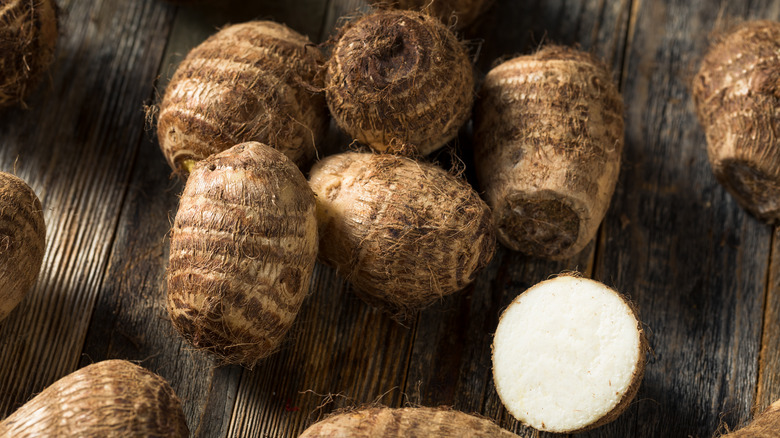
Taro plants take 9 to 12 months to mature.
The growth cycle includes three stages:
Vegetative Stage: Establishes a strong root system and develops large, heart-shaped leaves.
Flowering Stage: Inflorescences (flower spikes) emerge but are not desired for tuber quality.
Tuber Development Stage: Focuses on tuber growth underground.
Leaf Yellowing: As maturity approaches, leaves turn yellow and wilt. Not all leaves need to yellow; waiting too long can lead to overripe tubers.
Stem Weakness: Weak stems that fall over indicate readiness for harvest.
Taro corms should be at least 3 to 4 inches in diameter before harvesting.
Smaller corms can be harvested earlier but may lack full flavor and texture.
Digging: Gently dig around the base of the plant to expose the tubers.
Lifting: Lift the plant, supporting the tubers, and avoid bruising or breaking them.
Trimming Leaves: Trim yellowed leaves, leaving a short stem attached to the tuber.
Curing: Allow tubers to cure for a day or two in a cool, dry place before storage or use.
Remember, patience during harvesting ensures the best taro flavor! 🌱🍠
Processing Taro into Poi: Traditional Methods vs Modern Approaches
Taro, a staple crop in Hawaiian culture, is commonly processed into poi, a traditional Hawaiian dish. The process of transforming taro roots into poi can be done using either traditional methods or modern approaches. Each method has its own unique characteristics and benefits.

- Traditional Method of Processing Taro into Poi:
- Steaming or Baking: Taro roots are traditionally steamed or baked until soft in an imu, an underground oven, imparting a smoky flavor.
- Pounding Process: Cooked taro is pounded using a poho (wooden pounding board) and pohaku (stone pounder) to achieve a smooth consistency.
- Mixing with Water: Gradually adding water to the pounded taro while stirring to reach the desired thickness and texture.
- Result: Produces a thick, creamy, slightly tangy poi highly valued in Hawaiian cuisine.
- Modern Approach to Processing Taro into Poi:
- Cooking: Taro roots are cooked in a pot or steamer instead of using an imu.
- Mashing: Electric mixers or food processors are employed for mashing, reducing physical effort compared to traditional pounding.
- Mixing Process: Water is added gradually while mixing or blending until the desired consistency is achieved.
- Benefits: Offers convenience and efficiency, especially for those lacking traditional tools or physical strength.
- Comparison of Traditional and Modern Methods:
- Traditional: Honors cultural traditions, imparts unique taste, requires skill and strength.
- Modern: Provides convenience, ease of use, efficient for those without traditional tools.
Both methods aim to transform taro roots into delicious and nutritious poi, allowing individuals to choose based on their preferences and available resources. Traditional methods emphasize cultural heritage and taste experience, while modern approaches focus on convenience and accessibility, ultimately serving the common goal of creating a delightful dish enjoyed by many.
Exploring Different Culinary Uses of Taro Beyond Poi
Taro, with its starchy and versatile nature, has been a staple in Hawaiian cuisine for centuries. While poi remains the most popular use of taro, this root vegetable offers a myriad of culinary possibilities beyond this traditional dish.
Here are some exciting ways to incorporate taro into your cooking:

- Substitute for Potatoes:
- Taro’s creamy texture and nutty flavor make it an excellent replacement for potatoes.
- Try mashed taro as a side dish or use it in gratins for a unique twist.
- Taro fries are a delightful alternative to regular potato fries.
- Desserts with Taro:
- Taro’s natural sweetness and distinct taste lend themselves well to desserts.
- Taro Ice Cream: Creamy, purple-hued ice cream with taro chunks.
- Taro Mochi: Soft, chewy mochi filled with taro paste.
- Taro Pudding: A comforting dessert made from taro puree.
- Taro Pancakes: Fluffy pancakes with grated taro mixed into the batter.
- Baked Goods:
- Taro can enhance baked goods with its earthy flavor:
- Taro Bread: Add grated taro to bread dough for a unique loaf.
- Taro Cake: Moist and flavorful cake made with taro puree.
- Taro can enhance baked goods with its earthy flavor:
- Savory Twists:
- Beyond poi, consider savory dishes:
- Taro Chips: Thinly slice taro, season, and bake for crispy chips.
- Taro Curry: Add taro chunks to your favorite curry for extra heartiness.
- Taro Dumplings: Stuff taro paste into dumpling wrappers for a delightful treat.
- Beyond poi, consider savory dishes:
Remember, taro’s versatility knows no bounds—so get creative in the kitchen and savor the delightful flavors of this remarkable root vegetable! 🌱🍠
Taro Plant: A Sustainable and Environmentally Friendly Crop
Taro plant, also known as Colocasia esculenta, is not only a versatile food crop but also a sustainable and environmentally friendly one. With its ability to thrive in diverse climatic conditions and require minimal synthetic inputs, growing taro can contribute to a more sustainable agricultural system.

- Nitrogen-Fixing Properties:
- Taro plants have nitrogen-fixing abilities, forming a symbiotic relationship with soil bacteria.
- This trait enables taro to extract nitrogen from the air, reducing the necessity for synthetic fertilizers.
- Minimal Chemical Fertilizer Requirement:
- Due to its nitrogen-fixing properties, taro requires minimal synthetic fertilizers for growth.
- Reduced reliance on chemical fertilizers helps minimize environmental harm associated with their excessive use.
- Natural Pest Resistance:
- Taro exhibits high resistance to common agricultural pests and diseases.
- This natural resilience lowers the need for pesticide application in taro cultivation.
- Sustainability in Agriculture:
- Taro’s minimal need for pesticides and fertilizers aligns with sustainable agricultural practices.
- Incorporating taro into farming systems promotes environmentally friendly and culturally significant crop production.
By incorporating taro into our agricultural systems, we can promote more sustainable practices while ensuring the production of nutritious and culturally significant crops.
Tackling Common Challenges and Troubleshooting Taro Plant Issues
When cultivating taro plants, it is essential to be prepared for potential challenges and know how to troubleshoot them effectively. One common issue that gardeners may encounter is pests and diseases.
Pests: Taro is vulnerable to pests like aphids, caterpillars, and snails. Regularly inspect your plants for signs of infestation.
Diseases: Common diseases include root rot and leaf blight. Implement integrated pest management strategies:
Biological Control: Introduce beneficial insects or organisms to control pests.
Organic Insecticides: Use natural insecticides to minimize pest populations.
Good Air Circulation: Ensure proper ventilation to prevent fungal infections.
Taro requires a well-balanced soil with essential nutrients:
Nitrogen: Vital for leaf growth and overall health.
Phosphorus: Supports root development and flowering.
Potassium: Enhances disease resistance and overall vigor.
Iron: Essential for chlorophyll production.
Signs of Deficiency: Monitor for yellowing leaves or stunted growth.
Soil Tests: Regular soil testing helps identify specific deficiencies.
Organic Fertilizers: Apply compost or manure to improve soil fertility.
Foliar Sprays: Address deficiencies with micronutrient sprays.
Caution: Follow recommended rates to avoid over-fertilization.
Remember, a well-nourished taro plant thrives and yields healthy tubers! 🌱🍠
The Economic Potential of Growing Taro for Personal or Commercial Use
Taro, with its rich cultural heritage and versatile culinary uses, presents a promising economic potential for both personal and commercial cultivation. As consumer demand for traditional and sustainable agricultural products continues to grow, the market for taro and its byproducts such as poi has been steadily expanding. In fact, the global taro market is projected to reach a value of USD 35.8 billion by 2024, according to a report by Market Research Future.
- Commercial Potential:
- Taro is a staple crop with growth potential in Hawaii, where demand exceeds domestic supply, indicating opportunities for commercial cultivation.
- Taro has a high cultural and historical importance in Hawaii, contributing to its economic value and market demand.
- Taro can be grown in various marginal soils, enabling efficient land use and strategic resource management for commercial production.
- Market Demand and Prices:
- Taro has a growing market globally, with North America dominating imports and driving production due to high consumer demand.
- The global taro market is projected to grow steadily, with rising demand for its nutritional benefits and versatility in food products.
- Cost of Production and Revenue:
- The cost of production for taro includes labor, materials like plant nets, fertilizers, and pesticides, with an average yield estimated at 7,744 pounds per acre.
- Gross revenue from taro cultivation can reach up to $3,175 per acre based on an estimated price of $0.41 per pound.
In conclusion, growing taro for personal consumption or commercial purposes presents a viable economic opportunity due to its market demand, cultural significance, and potential for sustainable cultivation in various regions.
Sharing Taro Planting Tips and Tricks from Experienced Gardeners

There are certain tips and tricks that experienced gardeners recommend when it comes to planting taro. These insights can help ensure a successful and thriving taro crop in your backyard.
Choosing the Right Location:
- Taro thrives in wet and swampy conditions, so it is best to plant them in an area with moist soil or near a water source.
- Ensure the location provides enough space for the taro plants to spread out as they require ample room to grow.
Preparing the Soil:
- Taro plants prefer fertile and well-draining soil enriched with organic matter like compost or manure.
- Amending the soil with organic matter provides essential nutrients for healthy plant growth.
- Maintaining a pH level between 5.5 and 6.5 is ideal for taro cultivation, so testing the soil and adjusting pH if needed is beneficial.
By following these tips from experienced gardeners, you can enhance your taro planting techniques and increase the likelihood of a successful harvest.
The Role of Taro in Indigenous Food Sovereignty Movements
Taro, a remarkable and revered crop, stands at the heart of indigenous food sovereignty movements. Let’s explore its significance:
- Cultural Resilience and Reconnection:
- Indigenous communities recognize the value of preserving cultural traditions and reclaiming their food systems.
- Taro, deeply rooted in ancestral knowledge, symbolizes resilience and sustenance.
- By cultivating taro, communities reconnect with their land, traditions, and the wisdom passed down through generations.
- Asserting Control Over Food Production:
- Taro cultivation becomes a powerful tool for asserting cultural identity and autonomy.
- It allows indigenous peoples to take charge of their food production, breaking free from historical dependencies.
- Colonization Challenges: Taro cultivation counters the impacts of colonization, restoring agency and self-sufficiency.
- Defining Food Systems with Cultural Values:
- Indigenous food sovereignty movements emphasize sustainable practices aligned with cultural values.
- Taro embodies this ethos, providing not only nutrition but also a spiritual connection.
- Communities reclaim their right to shape food systems that honor tradition, ecology, and well-being.
- Unity and Nourishment:
- Taro nourishes both body and soul.
- Its cultivation fosters unity within indigenous communities, reinforcing bonds and resilience.
In celebrating taro, we honor the past, empower the present, and cultivate a sustainable future. 🌱🌺
Taro Plant: Cultivating Cultural Resilience and Preserving Traditions
The taro plant holds immense cultural significance in Hawaiian traditions, serving as a staple food and symbolizing the deep connection between the people and the land. Cultivating taro not only preserves cultural heritage but also contributes to the sustainability of local communities. Here are key points highlighting the importance of taro cultivation in preserving cultural resilience and traditions:
Inspiring Stories of Successful Taro Plantations and Poi Producers
The success stories of taro plantations and poi producers in Hawaii are both inspiring and vital for preserving cultural heritage. Let’s delve into some remarkable examples:
- Mokulele Farms:
- Located on the picturesque island of Maui, Mokulele Farms has been cultivating taro for over three decades.
- Their commitment to sustainable and environmentally friendly practices ensures high-quality produce while safeguarding the ecosystem.
- Reviving the Taro Industry: Mokulele Farms played a pivotal role in revitalizing the taro industry.
- Preserving Cultural Significance: By preserving the art of poi making, they connect local communities to their cultural roots.
- Excellence in Cultivation: Meticulous planting techniques and hand-harvesting at optimal ripeness contribute to their success.
- National Recognition: Their dedication has garnered national acclaim.
- Supplying Top-Notch Taro and Poi: Mokulele Farms provides top-quality taro and poi products to an expanding customer base.
- Impact Beyond Mokulele Farms:
- Mokulele Farms exemplifies the potential of taro plantations and poi producers across Hawaii.
- Economic Growth: These endeavors contribute to economic growth by sustaining an ancient practice.
- Food Sovereignty: By cultivating taro, they enhance food sovereignty—reducing dependence on external food sources.
- Inspiring Others: Their knowledge-sharing inspires fellow farmers to embark on this rewarding agricultural journey.
- Cultural Resilience: Taro cultivation fosters cultural resilience, ensuring traditions endure.
In essence, these success stories demonstrate that taro isn’t just a crop—it’s a bridge connecting the past, present, and future of Hawaii. 🌱🌺
Watch video for more infromation:
FAQ
What is the historical significance of taro in Hawaiian culture?
Taro holds great cultural importance in Hawaiian culture as it is considered a staple food and has been cultivated for centuries. It is often associated with the Hawaiian creation story and is used in various traditional ceremonies and celebrations.
What are the nutritional benefits of taro and poi?
Taro is rich in nutrients, including vitamins, minerals, and fiber. It is a good source of complex carbohydrates and provides energy. Poi, a traditional Hawaiian dish made from taro, is high in dietary fiber and low in fat, making it a healthy and nutritious option.
What are the climate and soil requirements for growing taro plants?
Taro plants thrive in warm and tropical climates. They require ample moisture and grow best in loamy soils with good drainage. The pH level of the soil should be slightly acidic to neutral, ranging from 5.5 to 7.0.
How do I choose the right taro varieties for my backyard?
The choice of taro varieties depends on various factors such as climate, soil conditions, and intended use. It is recommended to consult with local experts or nurseries to select taro varieties that are well-suited for your specific region and purpose.
What are the proper taro planting techniques?
Taro plants are typically propagated by corms or shoots, which are planted in shallow water or moist soil. The corms should be spaced apart and planted in rows, ensuring adequate spacing for proper growth. The planting depth and water level should be adjusted based on the specific taro variety and environmental conditions.
How do I care for and manage pests for taro plants?
Regular watering, proper fertilization, and maintaining a healthy growing environment are essential for taro plant health. Additionally, practicing good pest management techniques, such as monitoring for pests, using organic insecticides if necessary, and implementing crop rotation, can help prevent and control common taro plant pests.
When is the right time to harvest taro for optimal flavor?
Taro is typically harvested when the leaves start to turn yellow and wither. This usually occurs around 9 to 12 months after planting. However, the exact timing may vary depending on the taro variety and desired use, so it is important to monitor the plants closely and harvest when the corms have reached the desired size and maturity.
What are the traditional methods of processing taro into poi?
Traditional methods of processing taro into poi involve cooking and pounding the cooked corms to create a smooth paste-like consistency. The cooked taro is traditionally pounded using a pohaku ku’i ‘ai (stone poi pounder) in a wooden board or ku’i ‘ai (poi pounding board).
What are some culinary uses of taro beyond poi?
While poi is the most well-known culinary use of taro, there are various other ways to enjoy this versatile crop. Taro can be used in soups, stews, curries, chips, and even desserts like taro ice cream or taro-flavored cakes and pastries.
How is growing taro considered sustainable and environmentally friendly?
Taro is a sustainable crop as it requires minimal chemical inputs, reduces erosion through its extensive root system, and contributes to soil health and water conservation. Its cultivation also promotes biodiversity and helps maintain the ecological balance in wetland ecosystems.
What are some common challenges and troubleshooting tips for taro plant issues?
Common challenges in growing taro include pest infestations, nutrient deficiencies or imbalances, and diseases. To troubleshoot these issues, it is important to identify the problem accurately, seek advice from local agricultural extension services or experts, and implement appropriate solutions such as organic pest control methods or adjusting fertilization practices.
What is the economic potential of growing taro for personal or commercial use?
Growing taro can have economic benefits both for personal consumption and commercial purposes. While personal cultivation can provide a sustainable and cost-effective food source, commercial taro production can cater to the growing demand for taro-based products, such as poi, taro chips, and taro flour, and contribute to local economies.
Can you share some taro planting tips and tricks from experienced gardeners?
Experienced gardeners recommend selecting healthy corms or shoots from reputable sources, ensuring proper spacing and drainage, and maintaining consistent moisture levels for successful taro cultivation. They also emphasize the importance of regular monitoring, soil testing, and adjusting cultural practices based on local conditions.
How does taro contribute to indigenous food sovereignty movements?
Taro plays a significant role in indigenous food sovereignty movements by promoting self-sufficiency, cultural revitalization, and reclaiming traditional food systems. Its cultivation and consumption help foster a sense of connection to ancestral lands, preserve indigenous knowledge, and strengthen community resilience.
How does taro cultivation contribute to cultural resilience and the preservation of traditions?
Taro cultivation is deeply intertwined with cultural practices and traditions in many communities, providing a means of preserving cultural heritage and passing down knowledge from one generation to another. By cultivating taro, communities can strengthen their cultural identity, maintain traditional farming methods, and ensure the continuation of cultural traditions and customs.

Studied Agricultural Engineering-Plant Protection at University of California, Davis.
Head of Content writing team at Southelmontehydroponics.com

